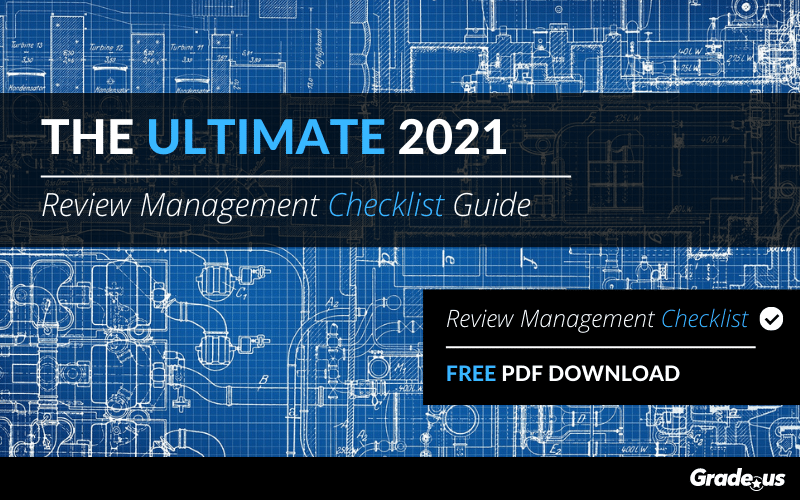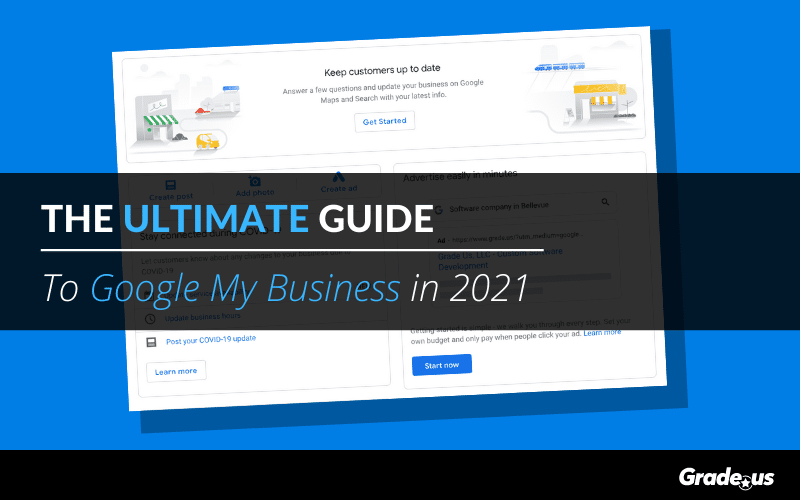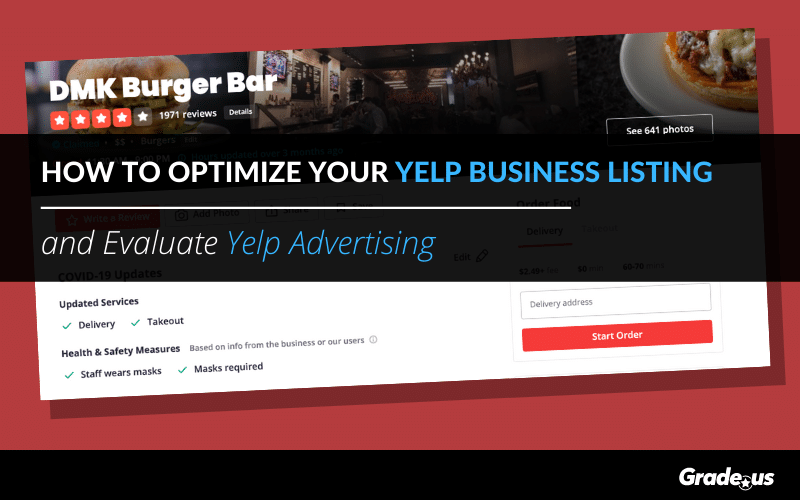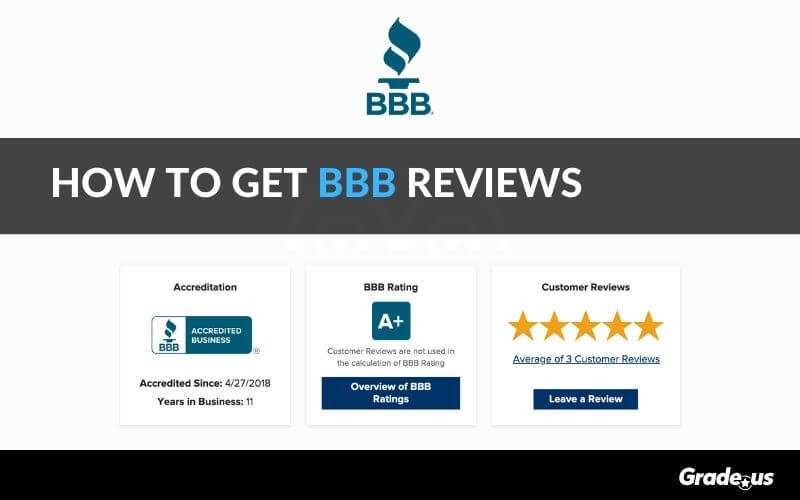Online reputation management (ORM) has evolved into a necessity of digital marketing. If your business is online, you’ll need to manage your online reviews actively. With many businesses adjusting to the new normal, your online reviews can highlight your customers’ current expectations and support you as you future-proof your business. Online reviews increase your company’s visibility and social proof benefiting your customer growth, customer retention, and repeat business.
But like most marketing channels, it’s critical for your business to take a proactive approach to your online reviews and control the narrative.
What does that look like for online review management? It means having ORM strategies in place that address:
Review generation. How do you consistently earn a steady stream of positive reviews across multiple online review sites?
Review monitoring. How do you respond to positive and negative reviews in a timely, efficient, and effective fashion?
Review marketing. How do you take your best reviews and elevate them to help you bring in new customers and celebrate your happy customers?
Review analysis. Who’s responsible for addressing your customer’s macro, meso, and micro level complaints? If customers complain about fulfillment, service quality, or wait times — do you have a process in place to make the necessary changes and improvements?
This post will help you tailor an online review management strategy for your business and industry (since different industries have different nuances); we’ll help you implement these strategies with an actionable checklist for you and your team.
Let’s get started.
Table of Contents
How to use this review management checklist
The details we’ll share have a cumulative and compounding effect on your business. The more of these tips and strategies you include, the better your review portfolio will be.
Think 2 + 2 = 400.
These details give you the leverage you need to dramatically improve the results you can achieve from your online reviews.
Treat this checklist like a buffet.
Pick and choose the tools and resources that will work best for your business. I recommend giving all of these details a try as you’ll find your results increase exponentially when used holistically.
The Business Fulfillment Checklist
It doesn’t matter whether you’re running a service or product business. Whether you’re focused locally, regionally, or nationally, your fulfillment needs to be top-shelf.
This is the basis of every review.
Prospective customers want to know:
a.) Are you safe and trustworthy?
b.) Did you deliver as promised (or over-deliver)?
c.) Have you helped businesses similar to theirs?
d.) Is there a compelling reason to work with your company?
Here are a few examples demonstrating the impact business fulfillment has on your business.
Restaurants
Several customers have proclaimed that this restaurant is the best in all of Chicago. Dig through these five-star reviews and you see something significant. Negative feedback! That’s right, these five-star reviews still mention fulfillment details that can be improved.
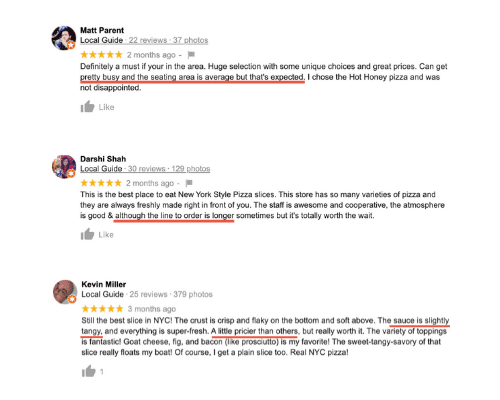
Healthcare
Fulfillment plays a significant role in healthcare as well. Patients want to see that the healthcare professional that they’ve selected prioritize them in a time of need. Often times they’re terrified or overwhelmed by the medical issues they face. Good bedside manner is a byproduct of the relationship and intentions hidden beneath.
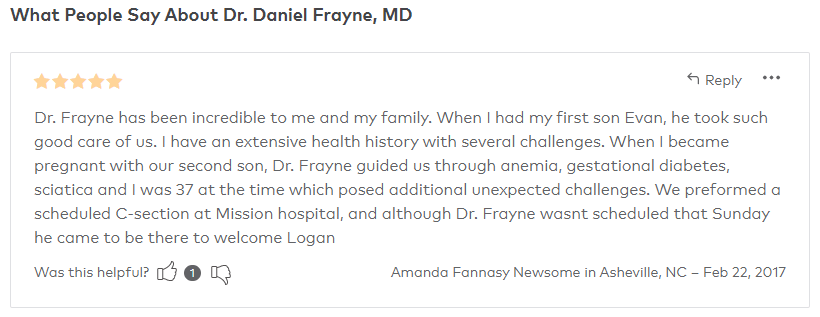
Legal
This example demonstrates the care, guidance, and protection service providers are expected to deliver, even in the legal industry.
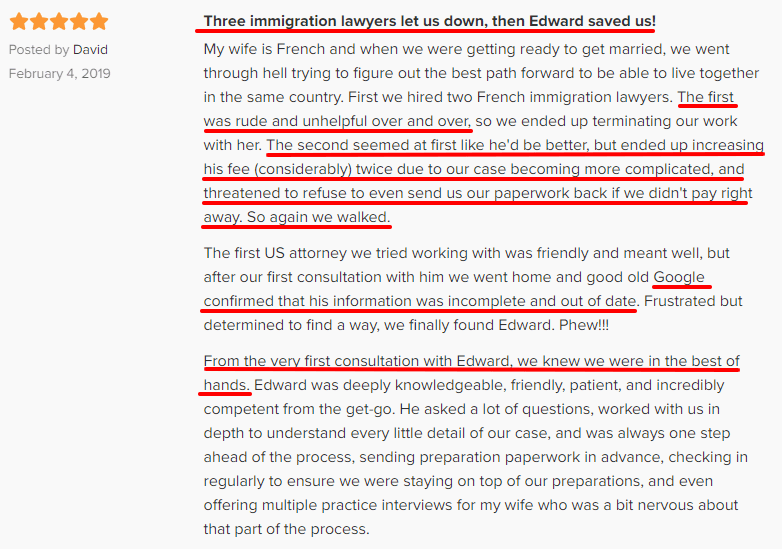
Home renovations and repair
Take a look at the highlights in this review. “The response to our call was immediate and promptly scheduled and arrived on time. Work was done in very little time and it was beautiful work.”

Personal training
Here’s another reason why fulfillment is so significant. You aren’t always privy to the “why.” This customer had a herniated disk injury, the owners at this gym customized his training, enabling him to continue to exercise. He achieved greater mobility after a major back injury.

Hospitality
It’s an unpleasant and uncommon example for the hospitality industry, but it demonstrates the importance fulfillment has on your business.

Here are a few ideas you can use to delight customers with your fulfillment operations.
- Ship products on the same day orders are received.
- Intention has a smell. Show your patients, customers, or clients that you have the very best of intentions for them.
- Provide customers with a service timeline outlining what will happen and when.
- Always act in your customer's best interests. Provide them with the care, guidance, and protection they need. If you've made a mistake or there's an error in a customer's order and they need assistance, provide it even if that hurts you financially.
- Consider providing free/discounted shipping both ways.
- Ensure products are delivered on or before delivery due dates.
- Give service customers regular status updates (e.g. weekly, monthly, etc.).
- Provide service deliverables early or on time.
- Give customers more than you’ve promised whether that’s faster delivery, a lower price, more than expected, or additional surprise bonuses.
- Provide customers with advance notice if you’re unable to meet/keep your promise.
- Share a concise recovery plan with customers when you’re unable to keep your promises. Explain why the failure happened, how you plan to fix it, and when the results will be back to normal.
This can be tough to do.
Eating the cost of a mistake, for example, can be a bitter pill to swallow. It’s far more tempting to hang the mistake around your customer’s neck instead. Fulfillment forms the basis of your review management portfolio. Your ability to deliver on your promises sets the tone for the reviews you receive.
Review Management Audit Checklist
Reviews are the foundation of almost any marketing campaign. At some point, customers will want you to prove or validate the claims you’ve made about your business.
Reviews do that.
Improving reviews then requires that you take stock of your review management campaigns and portfolios with a review management audit.
Here’s a list of the basic details you’ll need to have in place to set your campaigns up properly.
1. Create a review listings audit spreadsheet
Make a list of the mainstream, niche, and specialty review sites unique to your industry.
Mainstream websites include Google Reviews, Facebook Recommendations, and Yelp reviews.
Examples of specialty or industry-specific review sites could be ZocDoc reviews for doctors, Edmunds.com reviews for auto dealers, Houzz reviews for home services, Zillow reviews for realtors, or Avvo reviews for attorneys.
Search for your business and each location you’d like to verify. You’ll want to verify that you’ve claimed/control each listing.
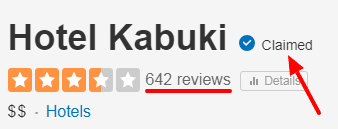
Next, you’ll want to take stock of (a.) the total number of reviews and (b.) the number of reviews received in the last three months.
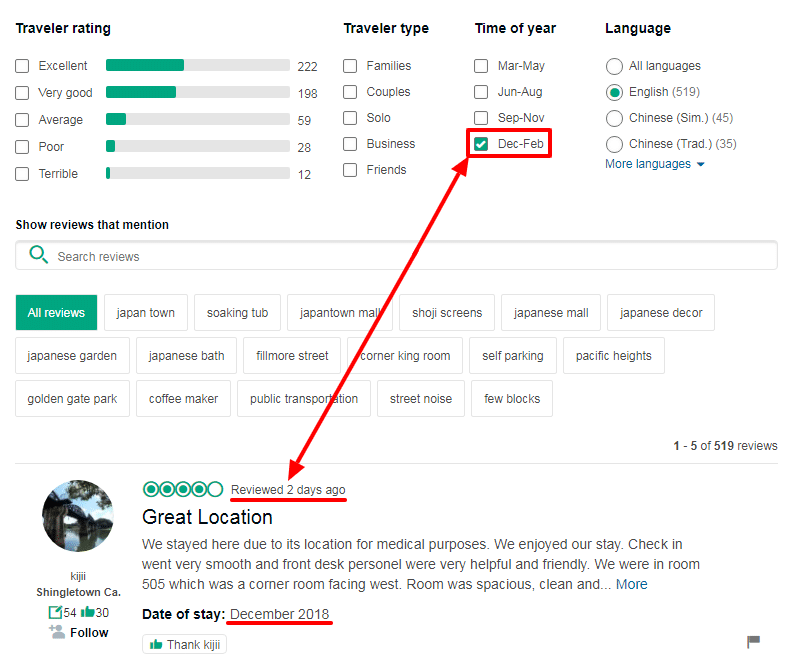
Why the last three months?
Because 85% of customers believe local reviews older than three months are irrelevant and not as meaningful. Don’t misunderstand here, reviews older than three months are still valuable as they establish the weight, sentiment, and tone of your review portfolio.
Customers focus on recency because they want to see that you’re still the same amazing company previous reviewers say you are. They want to verify that you haven’t changed, that service quality hasn’t declined.
Related: Do you have what you need to audit your review management program? Find out here.
2. Claim, set up and optimize review site listings (if you're starting from scratch)
If you’re starting from scratch you’ll want to create/claim, set up, and optimize your review site listings. Here are instructions for claiming each of the mainstream sites.
Here is a detailed walkthrough and optimization tutorial for your Google My Business account.
Here is a detailed walkthrough and optimization tutorial for Facebook recommendations.
Here is a detailed walkthrough and optimization tutorial for Yelp.
Here’s another detailed breakdown from Neil Patel showing you how to optimize your Yelp profile.
Here is a video that shows you how to get your business listed on the BBB.
What about your industry-specific and niche review profiles? Here’s a shortlist of review sites broken down by industry or category.
Hospitality | TripAdvisor | Booking.com | Viator |
Legal | Avvo | Martindale.com | Lawyers.com |
Automotive | RepairPal | DealerRater | Edmunds.com |
Restaurants | Zomato | OpenTable | Zagat |
Healthcare | Zocdoc | Healthgrades | Vitals |
Software | Capterra | GetApp | G2 |
Eldercare | Caring.com | Our Parents | SeniorAdvisor.com |
Home services | Angi | Houzz | HomeAdvisor |
Real Estate | Zillow | Trulia | Movoto |
Wedding | The Knot | Wedding Wire |
Go through and set up profiles for optimization on each of your niche/industry-specific sites as well. An optimized review profile includes:
- NAP (name, address and phone)
- Photos + videos
- Question and answers and/or FAQs (where relevant)
- Descriptions
- Keywords + tags + categories
- Hours of operation
- Website address
- Booking and/or appointment URLs (if applicable)
- Tracking details (e.g. discount/store codes, ad extensions, call tracking phone numbers, labels, etc.)
- Call to action
- Balanced reviews (5:1 ratio)
If you’re using a platform like Google My Business, Yelp, TripAdvisor, or Facebook, you’ll want to make sure you’re posting content consistently.
Depending on the platform, you’ll want to share incentives, special offers, and featured images. If you’re looking to generate revenue, you’ll want to build a relationship with your customers. Content is the way you do that.

Source: Google
The more your content speaks to your customer’s wants, the easier it will be to attract reviews, defuse objections, and convert customers.
Try it free: Review management campaigns are tough to manage. Grade.us makes review management easy and automatic. Speak to a Product Expert.
3. Set Quarterly Goals
If you’ve read my previous post on review management ROI, you know the value of aggregate reviews in the search results. You’ll want to set specific goals for your review management campaign.
- Internal goals e.g. five new 4 or 5-star reviews on three different review sites each month. Be sure to prioritize Google and other mainstream platforms first.
- External goals e.g. overtake competitors on mainstream and niche review sites (more five-star reviews) by the end of Q2. Make a systematic effort to catch, outperform, and surpass your competitors on each and every applicable review site.
Here’s an excerpt from two posts on this type of goal setting:
These comprehensive guides provide you with the step-by-step details you need to handle review management goal setting profitably.
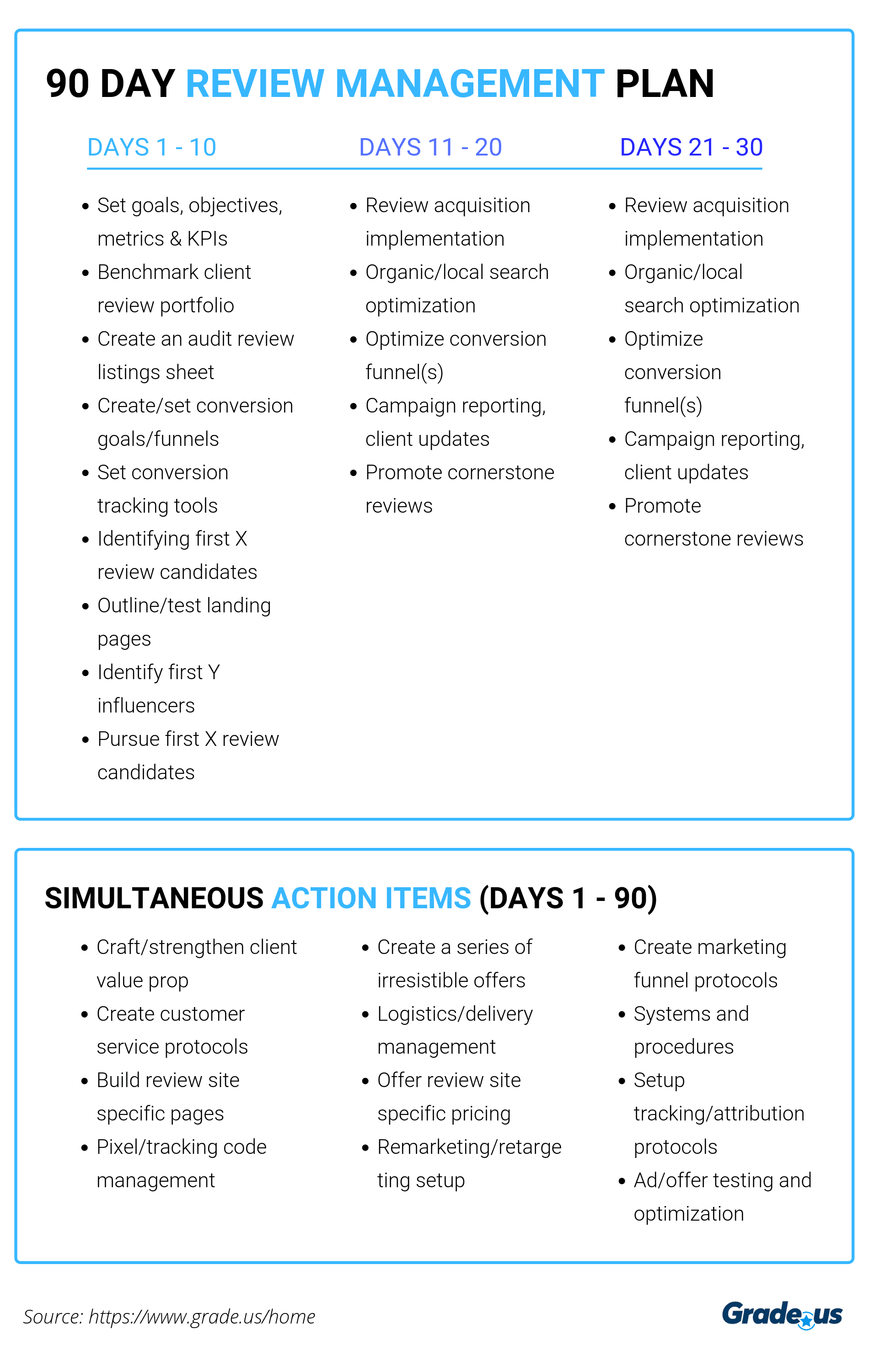
Why does this matter?
Because prospective customers set the tone here. They decide which review site matters most to them. These review sites are a fundamental part of their decision-making process. Your business should be present on each of the review sites your customers use to find what they need.
Strategy and Implementation Review Management Checklist
You’ll need to determine the who, what, where, when, and how of your campaign. Take the time to define your campaign strategy, roles, and responsibilities, details, etc.
1. Set review governance and processes
Decide who is in charge of review management. Is it your customer support team, your marketing dept., business owner, or marketing agency?
Create review management protocols. If you’re using review management software, you’ll want to set up notifications for each of the review platforms you’ve listed earlier so they’re able to respond to reviews as they come in.
Create employee incentive programs. What can you do/offer to motivate employees so they’re more willing to request reviews? Which employees can participate?
Create a response policy. Which reviews do you respond to (all, positive, negative, neutral) and when? Will you provide employees with scripts and templates they can use? Are they free to respond as they need to or do they need to answer specifically as outlined in your documentation? What should the overall tone of their responses be? How much authority will responders have/receive to solve/resolve customer concerns?
Set reporting guidelines. Create a review reporting plan, outlining who will receive the reports (e.g. executives, dept. managers, directors, etc.). Which reviews (e.g. positive or negative) will be shared with employees? Will employees in your incentive program receive more data than those who are not participating?
Set distribution guidelines for incentives. Determine when employees receive review generation incentives. Are incentives distributed privately, publicly (inside the company?)
2. Review generation implementation
How will you acquire reviews? You’ll need to determine whether you plan to use review management software or plan on requesting reviews manually.
You’ll need to:
1. Set up review funnel (landing page with review site links – make it easy to leave reviews). Here’s a demo from Grade.us showing you the ins and outs of your review funnel.
2. Set up email drip campaigns to automate review requests
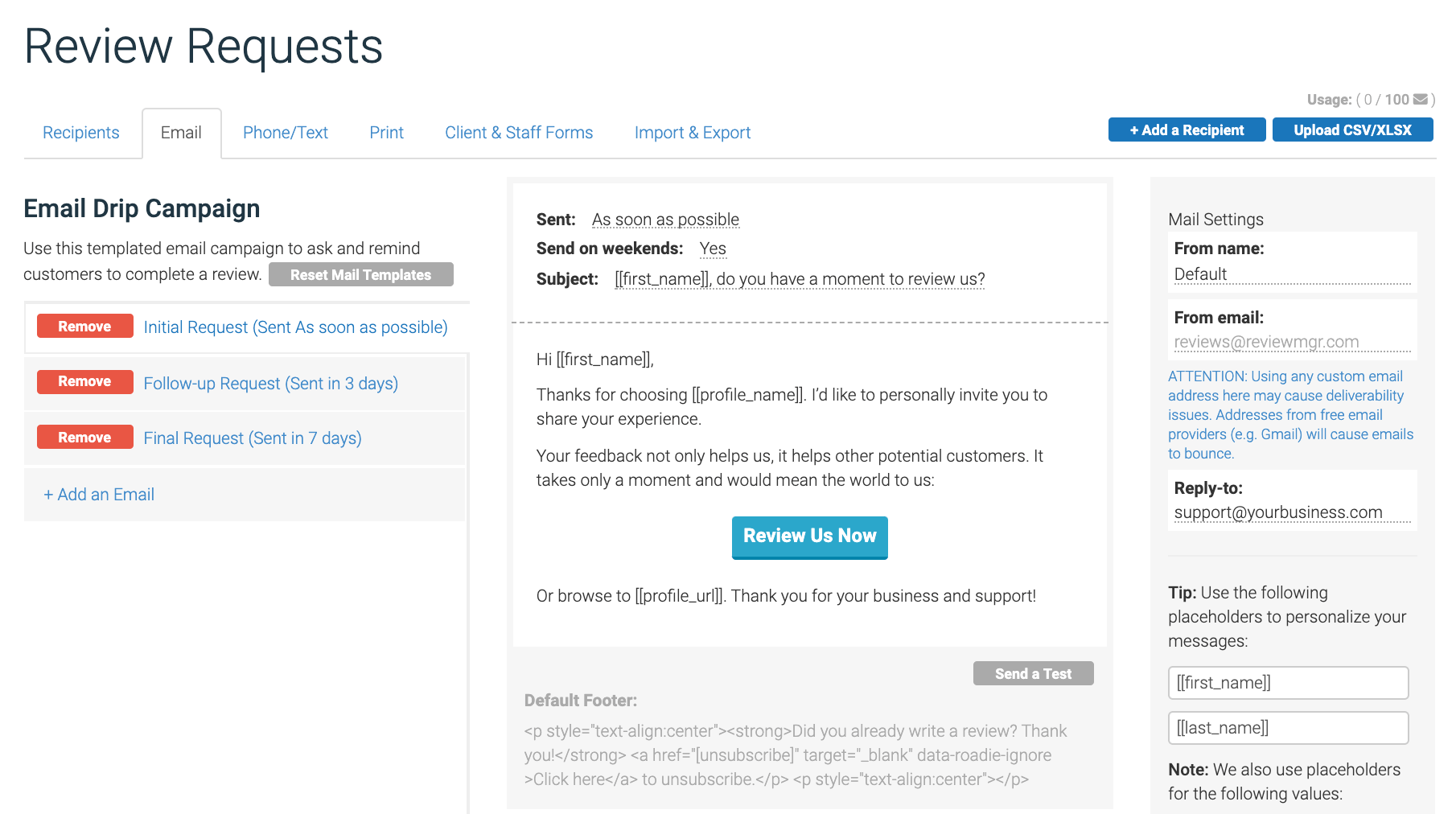
When determining up your email review request campaigns, there are various of ways to think about how you reach out and automate your emails. You’ll want to:
1. Determine your campaign’s cadence.
- How many emails?
- When will they be sent?
- Where will customers send replies?
2. Write copy for email campaigns.
3. Personalize your emails with names placeholders.
4. Include links to review sites or your review funnel.
5. Configure your review management tool with your email service provider.
Here’s a comprehensive list of email templates you can customize. Use these templates to request reviews, get feedback, or earn buy-in from customers.
You’ll want to ensure these are tailored to a specific customer segment in your list. You can segment your customers in a variety of ways including:
- Loyal customers
- Happy/unhappy customers
- Big/small spenders
- Engaged vs. disengaged customers
- Customers willing to refer vs. those unwilling to refer
Take a look at the segments listed in your analytics. Identify the customer segments that have the greatest impact on your business.
You may also want to:
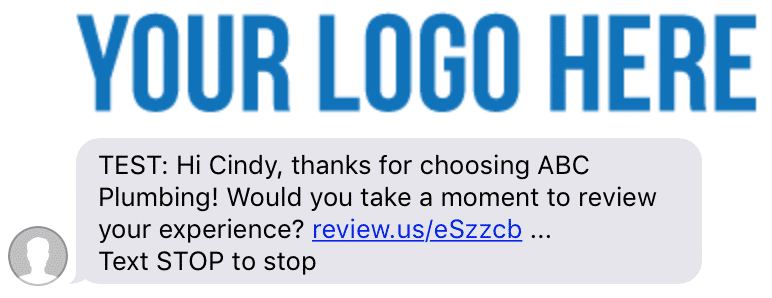
- Determine the SMS cadence for your campaigns
- How many texts? (Just one?)
- When will they be sent?
- Write text message (make sure to stay within the character limit)
- Configure with your SMS provider
What about SMS compliance?
If you’re planning on sending out SMS review requests, the FCC summarizes the dos and don’ts on their website. Here’s a shortlist of the don’ts.
- Don't send unsolicited text messages
- Don't contact consumers who have specifically asked you not to call/text
- Don't contact people before 8 am or after 9 pm
- Don't contact phone numbers on the national do not call registry
- Don't use an artificial voice, recording to reach consumers
- Don't use automated services to connect to a service where recipients are charged for the call (e.g., emergency lines, cellular phones, hospitals, physicians' offices, etc.)
- Don't send unsolicited faxes
If you’re sending text messages, many of these obviously won’t apply. What about the dos?
- Do use landing pages to earn opt-ins and consent
- Do send customers a compliance message confirming their opt-in
- Do get permission before adding or important contacts to your text marketing campaigns
- Do provide consumers with a way to opt-out of calls/texts
- Do maintain a "do not call" list of people who don't want your call. That list should be honored for five years.
- Do provide consumers with the name of the entity you're communicating on behalf of. Be sure also to provide a telephone number or address
These aren’t complicated. It’s simply about respecting your customer’s wishes and treating their contact information with respect.
Easy right?
2. Next, set up a repeatable routine to upload email address/phone number spreadsheets for review request campaigns (if not automated). Outline whether this is done:
- At time of the transaction?
- Weekly?
- Monthly?
- Inform/educate your employees on the ins and outs of your strategy.
- Provide employees with campaign links (e.g. review site links, review funnel links, and email signature snippets for review requests).
- Share your incentive program with employees (if you’re implementing one). Provide them with written details (e.g. how performance will be tracked/rewarded) on your incentive programs.
Review Marketing Checklist
The more you share your reviews, the harder they work for you. Here’s a set of details you can use to improve the effectiveness of each and every review.
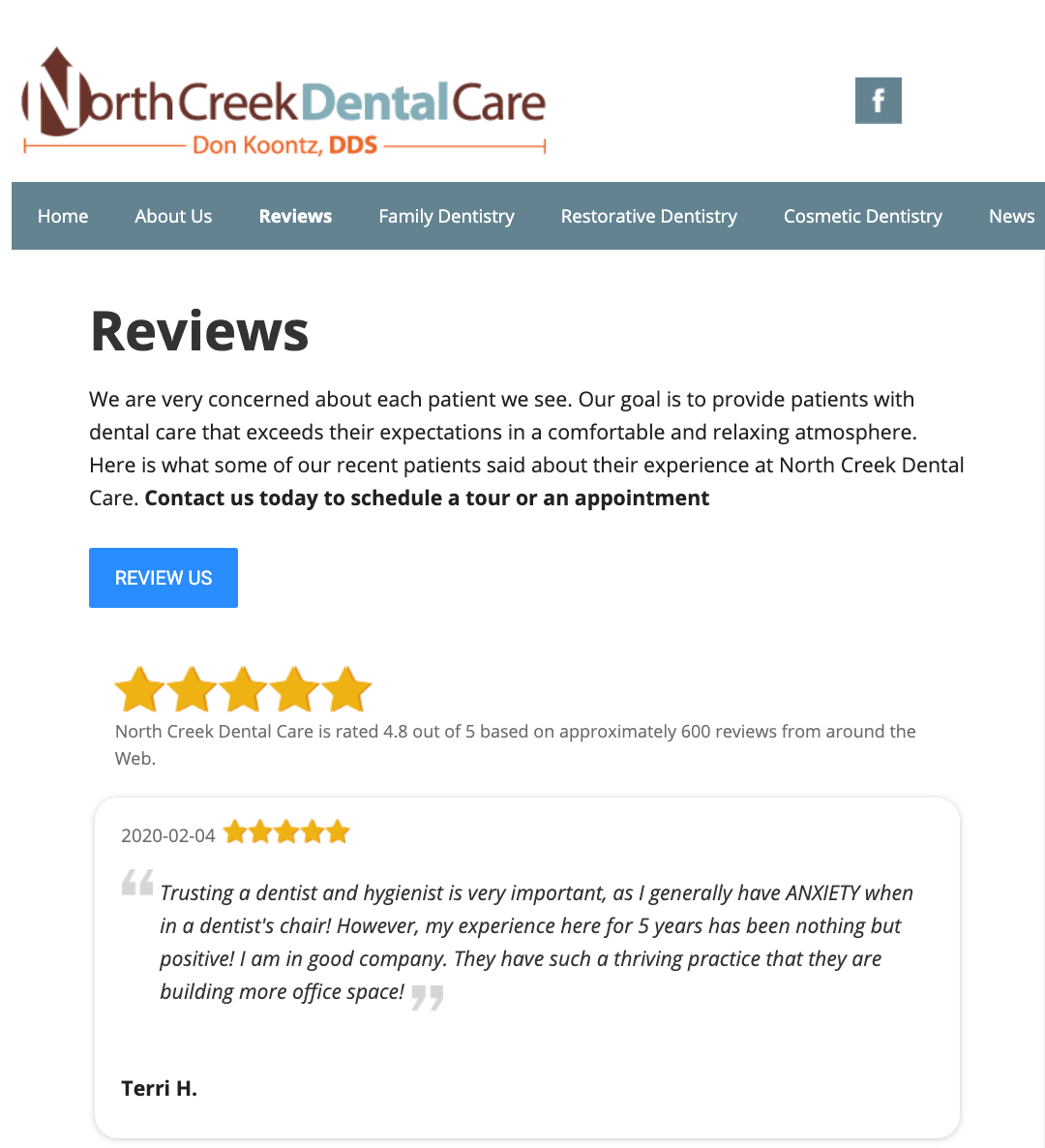
Set up a testimonials/review showcase page on your website.
Install and connect an automated plugin with curated reviews.
If you don’t have access to your own plugin, set a schedule for adding new reviews.
Manually write reviews in review schema or an automated plugin like review stream to include schema data automatically.
Add first-party reviews into your review portfolio mix. Create a page on your website with reviews listed which includes schema data.
Create a sharing strategy for social sharing.
Choose the social media platforms you’ll use to share your reviews (e.g. Facebook, Twitter, Instagram, LinkedIn, etc.).
Set automated share settings if you’re using a review management platform. If you’re sharing your reviews manually you’ll want to create a social sharing plan.
Determine when positive reviews will be shared.
Decide the ratings you’ll share (e.g. 4 and 5 stars? Only 5 stars?).
Outline how these reviews will be shared (e.g. manually vs. scheduled, designed as an image vs. review site link).
Create a list of one, three, four, and five-star reviews to promote. Why one and three-star reviews? You can use them as compelling evidence to show that you’ve changed.
Create a set of irresistible offers or tripwires to pair with your one, three, four, and five-star reviews.
Identify the advertising platforms you’ll use to promote your reviews (e.g., Google Ads, Microsoft Ads, Facebook Ads, Google
Display Network, third party display advertising, etc.).
Create a list of internal/external sources you can use to promote reviews (e.g., proposals, quotes, email signatures, on opt-in and sales confirmation pages, product pages, etc.).
Reviews are incredibly effective conversion tools. There are tons of ways to use review in your marketing materials.
They’re even more effective when they’re promoted and shared with customers as a consistent part of your review marketing and promotional efforts.
Customer Service Checklist
Customer service is an often neglected part of review management. The decision to write a review (positive or negative) is often based entirely on a customer’s recent interactions with customer service.
Mistakes happen.
Customers, for the most part, aren’t unreasonable. They’re aware of the fact that you’re human and that humans make mistakes. They just want you to own, fix, and avoid repeating those mistakes.
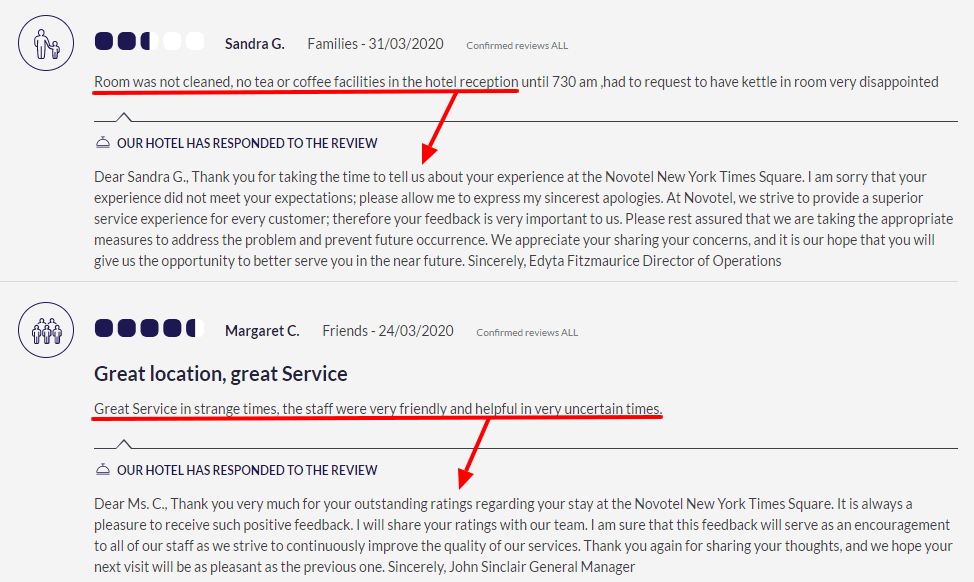
Here’s how you provide exceptional customer service.
1. Make sure support knows the product or service
Customers expect your support teams to have in-depth knowledge of the product or service you’re offering. Many customer support teams at large and small organizations aren’t knowledgeable. Why?
Because management would have to pay them more! Knowledgeable reps are exceptionally valuable and for a good reason. Here are some simple steps you can take to nurture an A-player support team in your organization.
- Provide comprehensive training for customer-facing teams (e.g. support, sales, etc.).
- Conduct monthly, quarterly and annual testing on business, product/service details.
- Reward employees with the highest scores.
- Provide employees with strong incentives to maintain high product knowledge.
- Consider paying more/reducing the size of your support team.
How do you view your customer support teams? Is it an expense that needs to be minimized or an asset that boosts conversions and revenue?
Zappos has the right idea on this.
Joseph Michelli, the author of The Zappos Experience, says, “Zappos invests in the call center not as a cost, but the opportunity to market.” If you’re supposed to invest in your support team, how do you verify that you’re receiving a return on your investment?
Here’s how they did it.
- Measure call time percentages: Support teams are focused on creating an emotional connection and building a relationship with customers. While other support teams are focused on getting customers off the phone or taking the conversation offline, Zappos support reps focus on building the relationship.
- Monitor abandonment time: Some reps maintain an open session with customers even though the customer has already disconnected the chat. Others ghost customers if the interaction is expected to be unpleasant (e.g., complaints, mistakes, etc.).
- Measure happiness: Zappos uses a 100 pt. rating system called the Happiness Experience Form. They use specific metrics to evaluate the support team's performance — did support provide a wow experience? Has support attempted to address unspoken needs? Did they maintain rapport with the customer? Did they try to make an emotional connection with the customer?
You can focus on the metrics that matter most for your business.
The relationship is key.
Your support team must view their work as an extension of review management. The better they do, the easier it is to attract high-quality reviews and happy customers.
2. Monitor competitor/industry sentiment
Do you have your finger on the pulse of the marketplace? Do you know what customers are saying about your competitors and your industry?
You should.
You can use tools like:
- Google Alerts monitoring keyword-driven queries on the web.
- Fanbooster for social listening/monitoring.
- BoardReader forum search and sentiment analysis.
- Grade.us for review monitoring, management, and analysis.
Additionally, there are a plethora of additional options for you to choose from.
If your customers or competitors are on a particular platform, you’ll want to monitor those platforms accordingly.
In a spreadsheet, include monthly details on:
- Whether industry sentiment is trending up or down.
- Competitors who are gaining or losing favor in the marketplace.
- Sensitivities or expectations regarding delivery, price, product, service, or support.
- Opportunities to pull ahead of or outperform competitors (via competitor miss-steps, gaps in their offering, or +/- industry changes).
You’ll also want to analyze the general, overall direction of your review portfolio. You’ll want to analyze the:
- Quantity of reviews
- Quality of reviews
- The overall sentiment and trends in particular
It’s also a good idea to integrate the reporting in your review management platform with your Google account, so you can bring your data into their platform. Here’s a detailed breakdown that gives you a small taste of what’s possible with your already available data.
You’ll want to take stock of your review portfolio consistently to ensure you’re achieving the results you need.
You should have access to detailed analytics.
You’ll want to monitor the review sites that perform best and pair that with your analytics data. As far as reviews are concerned, you should have full access to data review trends, sentiment analysis, campaign performance, clickthroughs, and positive reviews — the usual stuff.
Your executives may not care.
Let’s say you want to justify review management to your clients or executives in your organization. You’ll need to focus on the metrics that move the needle.
These could be:
- Clickthrough rates
- Web traffic
- Opt-ins
- Conversion rates
- Aggregate review rating (i.e., five stars)
- Return on ad spend (ROAS)
- Traffic from review sites
- Conversions from review sites
- Revenue per review site
- Revenue per visitor
You probably have a pretty good idea of the core metrics that are important to your organization.
Start there.
Convert the metrics from your review management campaigns into metrics that matter to the organization. Break your campaign down, so executives hear and understand.
Download the checklist and start executing your online review management plan
Reviews, as you know, are incredibly important.
But they’re underutilized.
Once they’ve received them, most businesses neglect their reviews. They fail to provide their customers with the underlying structure they need to help their business.
They don’t see the connection.
You’re now in the know. Online reviews are kingmakers – if you know how to use them properly. As we’ve seen, online reviews can be used throughout the sales and marketing funnel. But only if your review management campaign has structure – the systems and procedures needed to perform well.
Can you deliver?
You can if you follow the items listed in this checklist. With a clear plan to follow and some upfront preparation, you’ll have the resources you need to run circles around the competition. A complete surprise to everyone, except you.

